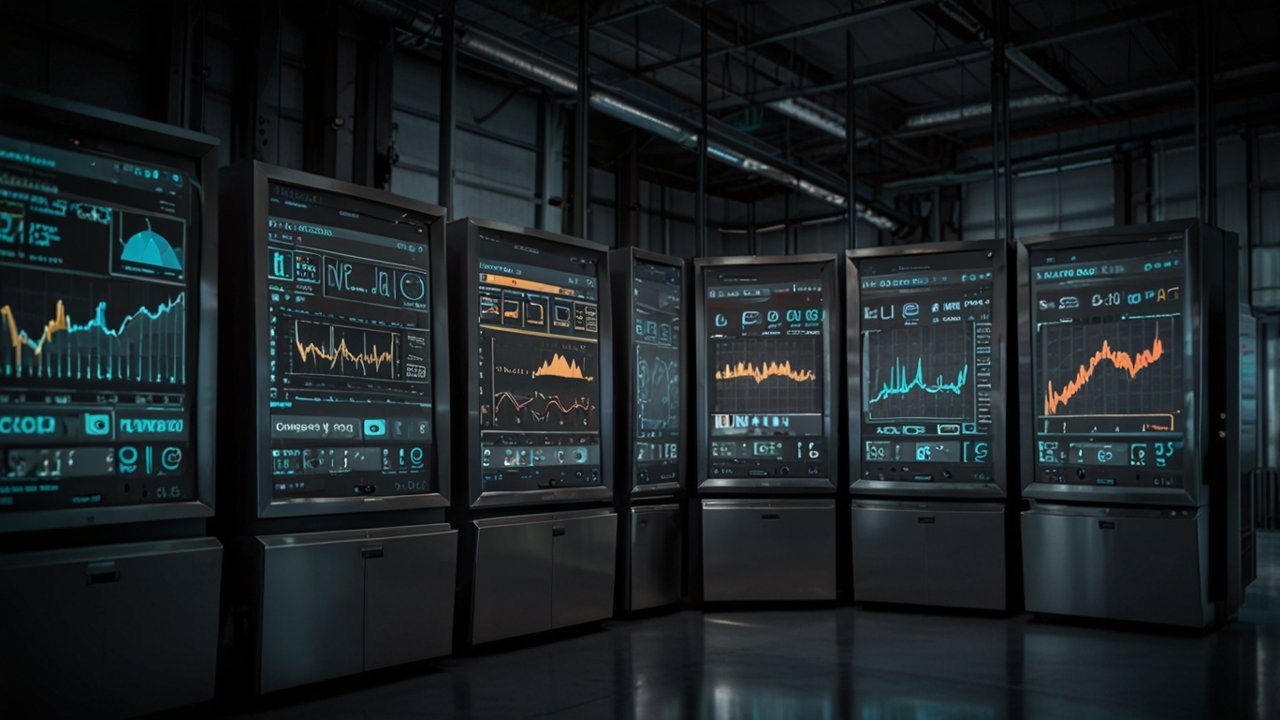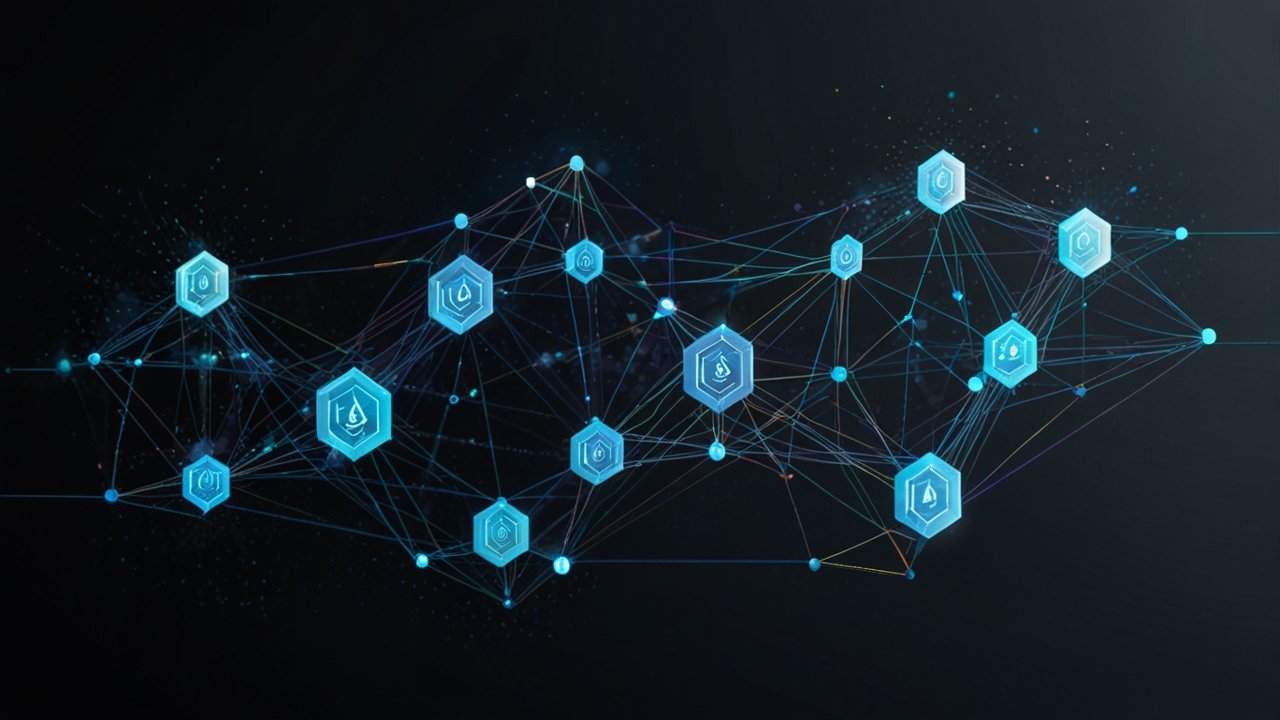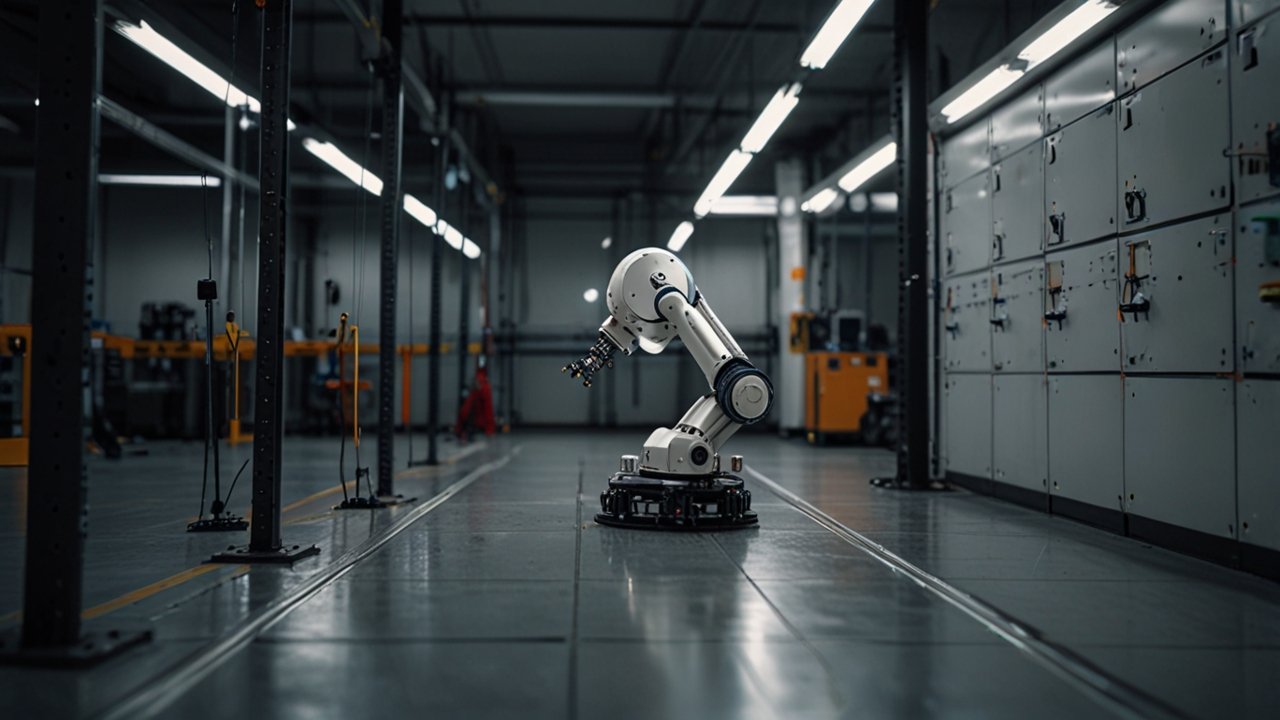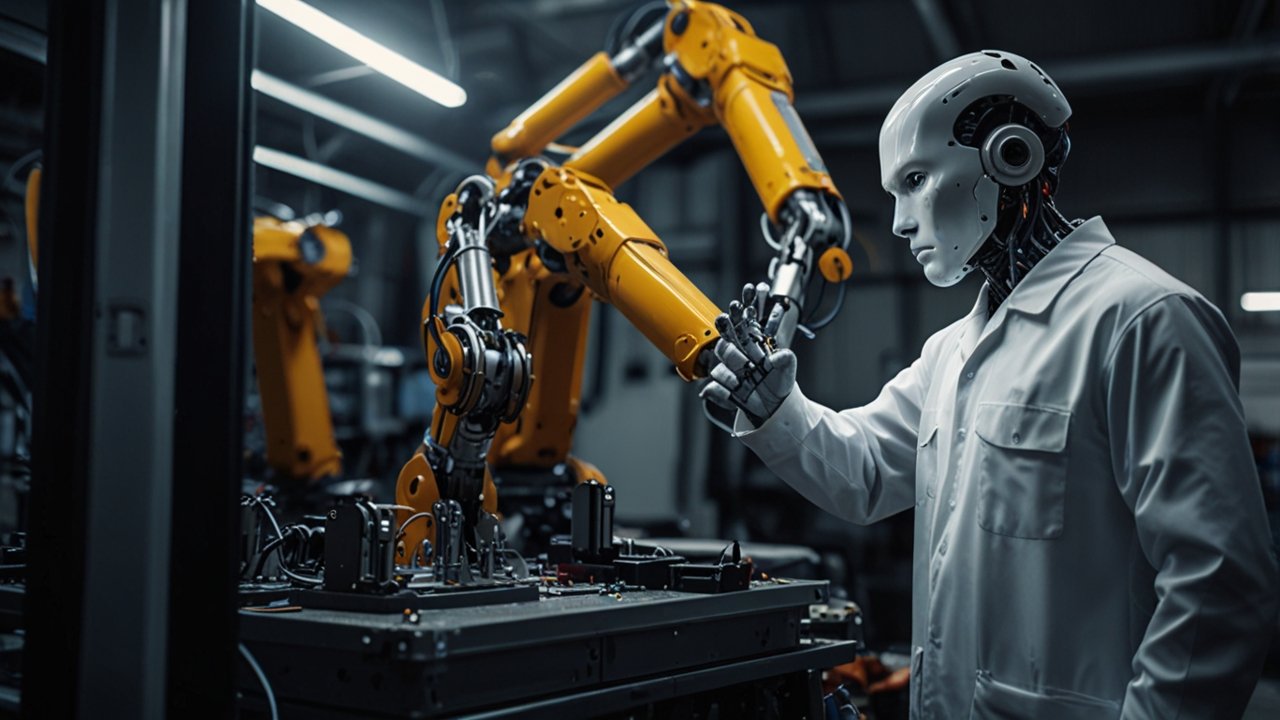Affective Computing: 6 Powerful Applications
This article explores one of the most intriguing areas within modern artificial intelligence, where machines not only perform tasks but also interpret human feelings. It explains how this technology has evolved and its wide-ranging applications across multiple industries. You will discover how systems are now designed to engage with us in deeply human ways.
Our discussion covers historical milestones, groundbreaking innovations, and promising future trends. The content delves into technical advancements and shows real-world examples that illustrate the benefits of these systems. Enjoy this journey into an exciting realm that bridges technology and emotion.
📑 Table of Contents
- Introduction to Affective Computing
- Evolution and History of Affective Computing
- How Emotion Recognition Enhances Affective Computing
- Sentiment Analysis Systems and Their Applications
- Real-World Case Studies of Affective Computing
- Empathic Technology in Modern Affective Computing Solutions
- Future Trends: Human-Machine Interaction and Beyond
- Affective Computing Spotlight: A Fresh Perspective
- FAQ
- Conclusion
Whether you are a student, professional, or simply curious about advanced technology, you will gain a clear understanding of the discipline’s evolution and importance. For more information on emerging technologies in our AI & Automation category, be sure to read further and share your thoughts at the end.
Introduction to Affective Computing
In this first section, we introduce the fundamentals and basic concepts that shape the discipline known as affective computing. The field has emerged as a unique intersection of psychology, computer science, and engineering, where computational systems are designed to sense and respond to our emotions.
Modern systems combine intelligence with an understanding of human cues. For additional background, explore insights from Artificial Intelligence that blend technical sophistication with creativity.
Understanding the Basics
At the heart of this transformative domain is the ability for machines to detect non-verbal cues, including facial expressions, tone of voice, and even physiological signals. Systems built on this technology are programmed to interpret subtle cues by employing algorithms inspired by psychological theories such as Paul Ekman’s work on micro-expressions. Researchers at MIT and other institutions laid a robust foundation in the mid-1990s, setting the stage for advancements that have now become indispensable in today’s tech ecosystem.
Scientific studies published on platforms like timetoast timeline underline the key milestones that have shaped the journey from initial theories to commercial applications. Early prototypes have evolved into sophisticated systems deployed in smart devices and digital customer service platforms. These breakthroughs support enhanced user interaction by ensuring that machines are not only responsive, but also empathetic to human needs. Have you ever wondered how your smartphone might sense your mood and adjust its responses accordingly?
Technological ecosystems increasingly demand solutions that combine computational intelligence with emotional responsiveness. This integration is essential for platforms looking to provide tailored responses, proving valuable in sectors ranging from healthcare to entertainment. The emphasis continues to grow as more businesses rely on such systems for higher engagement and improved service quality.
Key Concepts Explained
The discipline blends advanced sensor technology with machine learning, creating environments where data from facial expressions, voice modulation, and biometric signals converge. The systems are engineered to process this data rapidly and accurately, leveraging real-time analysis for timely decision-making. For instance, sophisticated algorithms analyze video streams to detect fleeting emotions that would otherwise pass unnoticed during everyday interactions.
This dynamic integration has been enriched by breakthroughs in neural networks and deep learning, fields that continue to push the boundaries. Significant contributions have come from international research groups, ensuring a diverse range of applications and methodologies. Technical papers and case studies, such as those on Wikipedia, provide additional context for foundational theories and contribute to a shared global knowledge base. Imagine a system that can appreciate humor or detect subtle hints of dissatisfaction; such capabilities are revolutionizing customer service and interactive interfaces.
The versatility of these systems lies in their adaptability, as they successfully integrate multiple sensory inputs and adjust outputs immediately. This makes the experience interactive and transformative. Can you see how this technology might redefine the way you interact with your devices?
Evolution and History of Affective Computing
This section offers an overview of the discipline’s evolution, charting its roots from early academic research to the sophisticated implementations of today. Historical milestones laid the groundwork for current systems, while continuous innovation drives the field forward.
The discipline was formalized by seminal work at MIT in the 1990s and has since witnessed numerous advancements. The overall evolution is well-documented on platforms such as Automation Technologies, which highlight the progression from conceptual models to practical, deployable solutions.
Historical Milestones
In the early days during the 1990s, researchers such as Rosalind Picard began to explore the idea that machines could potentially recognize and respond to human emotions. This breakthrough led to a seminal publication in 1995 and the influential book “Affective Computing” in 1997, which redefined the trajectory of artificial intelligence. Later, work by psychologist Paul Ekman provided empirical evidence that underlined the universality of facial expressions, thus accelerating the development of systems designed to capture these cues.
Articles in academic journals, including a detailed study from Intelligent Computing journal, outline the academic discourse that characterized the formative years of this discipline. Each milestone not only enriched theoretical foundations but also spurred technological innovations that eventually led to robust commercial applications. Over the years, the discipline has proven itself in multiple contexts—from enhancing automotive safety through driver monitoring systems to facilitating more intuitive digital customer experiences. Do you think these historical breakthroughs continue to influence the pace of future innovation?
The trajectory of this domain demonstrates a compelling evolution, where theoretical ideas evolved into practical software implementations. Each innovation was marked by a leap in technology and human insight. The commitment of researchers across the globe has significantly shaped the field’s direction.
Global Contributions
Today, contributions have come from various parts of the world, making the field a truly global endeavor. The United States, China, India, and European nations all play pivotal roles in driving research and development. For instance, insights drawn from diverse cultural contexts have enriched system design and ensured that applications meet regional user preferences. Studies and market reports from sources like Grandview Research provide numerical evidence for global market growth, forecasting billions in market value in upcoming years.
This international collaboration has led to significant investments and innovations in sensor technology, deep learning algorithms, and privacy-preserving architectures. It also highlights how ethical considerations, particularly in Europe with its strict privacy laws, influence design paradigms. Emphasis on local regulations ensures that systems not only serve technological needs but adhere to social standards. As you learn about these contributions, does it inspire you to consider a career in innovative technology?
The diversity of perspectives and approaches continues to enrich system capabilities, thereby advancing the discipline as a whole. Technological exchange between regions has accelerated progress and fostered a culture of collaboration that benefits end users worldwide.
How Emotion Recognition Enhances Affective Computing
This part delves into how the technology of reading human emotions plays a critical role in refining the overall system’s performance. The use of advanced sensing techniques makes interactions more natural and intuitive. Explore insights from AI and Robotics to understand the intersection between Intelligent systems and human cues.
Leveraging deep learning and multimodal data streams, modern systems have achieved unprecedented levels of accuracy. By processing real-time data from facial cues, vocal patterns, and even physiological signals, these systems excel at providing personalized responses.
Technological Integration in Emotion Analysis
Central to this discipline is the seamless integration of various sensors and methods for data collection. Machine learning algorithms process visual, auditory, and biometric signals, enabling the system to gauge subtle nuances in user expression. Research has demonstrated that combining these inputs in a multimodal approach significantly improves accuracy. Detailed methodology found in research papers shows that fusion techniques take into account diverse data streams, employing deep learning models that adapt over time.
Innovations in software frameworks allow living networks to continuously learn from new inputs, improving response and interaction quality. Such integration is already evident in wearable devices and automotive systems, where rapid analysis and feedback are critical. The system’s ability to adjust in real time ensures that interactions become increasingly natural and responsive. This convergence of technologies is a testament to years of rigorous research and development. What do you think the next breakthrough might be when multiple sensor technologies work equally well together?
Moreover, the field continuously embraces improvements in hardware, such as high-resolution cameras and advanced microphones, further enhancing the system’s capabilities. With each iteration, the systems become more reliable and responsive, ensuring that even the most subtle emotions are not overlooked.
Impact on User Experience
The benefits of this technology are most visible in the realm of user experience. Systems that can precisely assess emotional cues are better positioned to deliver personalized and empathetic interactions. For instance, in customer service, real-time analysis allows call centers to alter their approach tailored to the caller’s emotional state. This has led to significant improvements in user satisfaction and engagement. Studies published on platforms like Neuroscience News cite real-world examples where user interfaces adapt dynamically based on detected moods and expressions.
Furthermore, in settings such as healthcare and education, the change in interaction has proven to make digital environments more supportive and adaptive. The technology not only enhances responsiveness but also fosters trust, which is critical when dealing with sensitive data or emotionally charged situations. The interactive nature of these systems leads to a more satisfying and effective user experience. Have you ever experienced digital tools that seem to intuitively understand your needs?
By focusing on the nuances of human interaction, these systems bridge the gap between machine logic and human emotion. The enriched experiences have the potential to transform everyday interactions, making them more intuitive and meaningful.
Sentiment Analysis Systems and Their Applications
This section focuses on systems that evaluate textual and verbal data for mood and tone. They leverage advanced analytics to extract meaning from large datasets. Check out Innovative Solutions to see how these approaches are implemented effectively.
These systems have found utility in multiple sectors, adjusting content based on underlying sentiments. They not only boost engagement but also optimize communications in marketing and customer support.
Advancements in Text Analytics
Textual data provides a valuable trove of information for systems that analyze underlying sentiments. Advanced natural language processing techniques enable the system to sift through social media posts, customer reviews, and real-time chat messages to discern overall sentiment in interactions. This capability helps businesses identify trends and issues before they escalate. Researchers have noted that leveraging these techniques enhances the analytical framework, especially when combined with multimodal inputs.
Updated analytics are now capable of understanding context, irony, and even cultural nuances, providing a more refined analysis. Case studies indicate that the implementation of these tools can lead to up to a 25% increase in customer satisfaction. Tools such as sentiment classifiers and emotion detectors are the backbone of these systems. For example, one study demonstrated how improved text analysis could predict customer churn in telecommunications accurately. This technological leap, verified through independent testing, is instrumental in reshaping digital marketing approaches. In your own experience, have you seen technology anticipate your needs based on your online activity?
Furthermore, a careful calibration of algorithms ensures that the analysis remains unbiased, adapting over time through self-learning. This adaptation is critical for maintaining relevance across varied applications, from product recommendations to crisis management.
Use Cases in Customer Service
Customer service has dramatically changed thanks to systems that analyze and adapt based on customer sentiment. Agents and automated systems alike benefit from insights gathered from natural language data, leading to rapid adjustments in service delivery. Many companies now route calls to specific agents based on detected sentiment, improving service quality. Detailed case studies from technology-driven firms indicate that these systems can decrease call resolution times and improve overall satisfaction scores appreciably.
For instance, a major telecom operator reported marked improvements after deploying an advanced textual analytics tool that automatically flagged calls with negative sentiment for immediate follow-up. These improvements are supported by independent research and market analysis such as the one available from TBRC Blog which projects dramatic market growth. Over time, these tools continue to learn and adapt, enhancing the overall quality of support provided. How might your preferred service change if systems could instantly recognize and address your mood or concerns?
This integration of text analytics within customer service platforms not only improves operational efficiency but also provides a more personalized, responsive experience for every user. It raises the bar for service standards across industries.
Real-World Case Studies of Affective Computing
This section highlights several real-world applications where the discipline has been successfully implemented. Examples span multiple industries, demonstrating the benefits of these systems through practical case studies. Discover detailed insights on Tech Developments as you read further.
Case studies provide clear evidence that these systems work in diverse environments—from automotive solutions that monitor driver alertness to healthcare systems that track patient well-being. Evaluating these examples offers a perspective on both success stories and continued challenges in the field.
Success Stories from Various Industries
Across the globe, industries are tapping into this advanced technology to deliver more responsive and personalized services. In the automotive sector, systems installed in cars monitor driver alertness and mood to prevent accidents. In the entertainment industry, companies use the technology to gauge audience reactions in real time, thereby optimizing content and advertisements. In healthcare, hospitals in Asia have utilized these systems to track indicators of depression and stress by analyzing voice and facial data during patient interactions.
One notable example is a US-based company that pioneered a facial expression analysis tool which now serves a broad array of industries. Detailed case studies from this discipline have been featured on platforms like MorphCast blog, highlighting real-time feedback mechanisms in e-learning and digital marketing. Reports indicate that such implementations have generated significant improvements in user engagement, operational efficiency, and safety metrics. Have you ever experienced a technology that seemed to understand you better than a human?
The broad set of achievements depicted in these success stories underscores a trend toward widespread adoption and continued innovation. The impact is felt across domains, leading to real benefits for users and providers alike.
Comparative Analysis of Case Studies
The following comparison table provides an organized overview of several case studies in this field, evaluating each based on its inspiration, application, and regional impact. The table highlights successful implementations, showcasing systems developed in various parts of the world and their specific contributions. By examining case studies side by side, audiences can appreciate how differences in system design have led to variations in success measures. For example, some systems prioritize real-time responsiveness in automotive safety environments, whereas those in the healthcare sector might emphasize privacy and long-term behavioral tracking.
This comparative approach reveals that while technological challenges may vary by industry, the overall goal remains to enhance user interaction and satisfaction. Independent market analyses confirm that breakthroughs in one area often spur adoption in others, fueling innovation across sectors. The data suggests that advancements observed in one region can significantly impact product design and application trends globally. Considering these comparisons, how might your organization benefit from a technology that adapts based on user feedback?
Comprehensive Comparison of Case Studies
| Example | Inspiration | Application/Impact | Region |
|---|---|---|---|
| Affectiva | Micro-expression studies | Automotive safety and advertising | USA, Global |
| MorphCast | Privacy-preserving designs | In-browser feedback for e-learning | Europe |
| Healthcare VR | Voice and facial data | Patient monitoring and stress detection | Asia |
| Customer Sentiment Tool | NLP techniques | Call routing in telecom | Americas |
| Driver Alert System | Facial & vocal cues | Real-time safety monitoring | Global |
The above data clearly illustrates that advancements continue to drive the discipline forward, providing increasing value to both users and industries. What real-world challenge would you solve using a system that delivers this level of personalization?
Empathic Technology in Modern Affective Computing Solutions
This section focuses on how systems imbued with empathy are reshaping the way technology interacts with people. Empathetic interfaces bring a human touch into digital experiences, transforming healthcare, customer support, education, and more.
Empathy-driven components help tailor experiences to individual moods and needs. Explore further insights within the technological context to understand its growing influence.
Innovations in Empathy-Driven Interfaces
Researchers have integrated empathy into digital systems by designing interfaces that simulate human-like responses. These systems utilize algorithms that interpret subtle cues to generate outputs that align closely with user emotions. Development teams use extensive datasets and user feedback to continually refine these interactions. User-oriented designs have resulted in applications that are capable of not only recognizing expressions of joy, frustration, or sadness but also engaging in adaptive responses. Independent studies have shown that systems featuring these interfaces enhance overall satisfaction, seen in improved patient care outcomes and higher engagement ratings in customer service.
The technology integrates visual, auditory, and subtle contextual cues to create a seamless interaction environment that mimics natural human conversations. Can you imagine how a system that responds intuitively might redefine digital interactions in your daily life?
Furthermore, these innovations extend to wearable interfaces and virtual assistants, where constant feedback and emotional calibration create more relatable user experiences. Such developments are especially prominent in education and mental health applications, where empathetic responses lead to better outcomes.
Beneficial Outcomes in Healthcare and Customer Support
Empathy-driven systems have demonstrated measurable benefits in sectors such as healthcare and customer service. In healthcare, medical institutions have integrated these interfaces to monitor patients’ non-verbal cues, enabling early detection of stress or depression. Research shows that personalized responses can lead to improved patient satisfaction. In customer support, advanced chatbots using these technologies personalize interactions and have reduced log response times significantly. Preliminary studies indicate that using empathic systems contributes to a more engaged and satisfied customer base. Moreover, these systems allow more sensitive handling of critical situations, such as crisis intervention or complaint resolution, ensuring that users feel heard and supported. Would you be more inclined to use services that intuitively adapt to your emotional state?
Real-life implementations in high-pressure environments further validate this approach, providing both economic benefits to enterprises and improved outcomes for users. By integrating empathetic responses, these systems transform routine interactions into opportunities for meaningful engagement, raising the bar for industry standards.
Future Trends: Human-Machine Interaction and Beyond
Looking ahead, innovations will continue to push the boundaries of interactive systems. New trends promise even more seamless integration between technology and human behavior. The vision for the next generation of systems is both exciting and transformative.
Future developments indicate that real-time analysis and continuous learning will enhance system responsiveness even further. These breakthroughs are set to influence industries ranging from automotive to healthcare, creating richer user experiences.
Emerging Trends in Interface Development
Anticipated trends include further integration of multimodal data streams, resulting in interfaces that can analyze video, audio, and biometric signals simultaneously. Advances in deep learning will facilitate faster processing and better adaptation to user behavior. Recent test cases and prototypes suggest that upcoming systems will focus on reducing latency and ensuring privacy. Emerging research reveals that next-generation devices will incorporate miniaturized sensors and AI-enabled processors to provide a more intimate experience. These advancements are expected to transform personal devices, digital media, and even public installations, making interactions nearly lifelike. Have you ever considered how the future of digital interactions might feel like a natural extension of human contact?
The technology is poised to not only understand but predict user needs before they become verbally expressed. This progression implies an ever-deepening integration of technology into the fabric of everyday life, ensuring that systems become more intuitive and consequential in supporting daily routines.
Predictions and Market Growth
Market forecasts suggest significant growth in this field, with projections reaching billions in revenue by the end of the decade. The integration into various sectors, including automotive safety and personalized healthcare, underscores the economic potential. Industry reports project a compound annual growth rate exceeding 28%, emphasizing the pace of innovation.
Companies investing in these technologies are observing immediate benefits in consumer engagement, operational efficiency, and overall satisfaction. Analysts predict that regulatory frameworks, particularly in Europe and parts of Asia, will further propel system development by ensuring ethical standards are met. Examining market trends, one finds that the increased adoption of privacy-preserving techniques is enhancing public trust. In your view, what opportunities could arise from the market’s rapid expansion in systems that intuitively interact with users?
These predictions are supported by comprehensive studies and reliable market data. As research continues and technology advances, the discipline is set to transform conventional practices into dynamic, context-aware solutions that respond instantly to user needs.
Affective Computing Spotlight: A Fresh Perspective
This section offers an engaging narrative that captures the excitement and promise of a transformative technological field without delving into the technical jargon typically associated with it. Over time, the evolution of this discipline has led to systems that interact in ways reminiscent of human connection. The journey began with basic ideas and evolved through diligent research and practical trials, ultimately resulting in devices and applications that impress users with their intuitive nature.
At the core of these advancements lies an approach that emphasizes responsiveness, nuance, and the ability to learn from interactions. As technology continues to mature, everyday experiences become more enriched, making digital communication feel naturally empathetic. This narrative invites you to consider not just the technology itself, but the possibility of a future where interactions blend seamlessly with our daily lives. Innovations in sensor design, real-time processing, and adaptive algorithms have charted the course for this evolution.
The transformative potential is evident as industries adopt solutions that enhance user satisfaction and drive operational efficiency. Unique success stories in varied domains highlight that these advancements are not confined to research labs. Instead, they have permeated everyday experiences, ushering in a new era of accessible, future-forward solutions. This story emphasizes hope and creativity, encouraging a perspective that re-imagines the integration of technology into every facet of life. Ultimately, this fresh outlook challenges us to re-think conventional interactions and imagine a future where technology and human insight blend effortlessly.
Let this vision inspire you to explore further, transforming everyday challenges into opportunities for innovation and connectivity.
FAQ
What is affective computing?
Affective computing is a discipline that involves creating systems capable of recognizing, interpreting, and responding to human emotions using technologies such as facial analysis, voice detection, and biometric sensing.
How has the field evolved over time?
The field began in the 1990s with foundational research and has evolved through the integration of deep learning, advanced sensors, and global collaborations to become integral in industries like healthcare and automotive safety.
What industries benefit most from these systems?
Industries such as healthcare, automotive, customer service, marketing, and education benefit significantly from these systems, as they enable more personalized and empathetic interactions.
How do privacy and ethics factor into system design?
Privacy and ethics are critical in system design, particularly in regions with strict regulations. Many systems now incorporate privacy-preserving techniques to process data locally and ensure compliance with data protection laws.
What are the future trends predicted for this technology?
Future trends include enhanced multimodal data processing, real-time analysis, increased market growth, and further integration in everyday devices, with a strong focus on safe and ethical implementation.
Conclusion
In summary, the discipline has transformed modern technology by enabling systems that not only compute but also connect on an emotional level. From its humble beginnings in academic research to its expansive applications in industries around the world, the journey has been remarkable.
We have seen how historical milestones, technological integrations, real-world case studies, and futuristic trends combine to create a landscape rich with promise. Innovative solutions in driver safety, healthcare support, and customer service are just the beginning. Have you experienced technology that seems to adapt to your mood?
We encourage you to share your experiences and insights in the comments below, and if you are interested in learning more, for more information please visit trusted sources and join communities that explore these advancements. To connect further, Contact us for more details.




















Leave a Reply